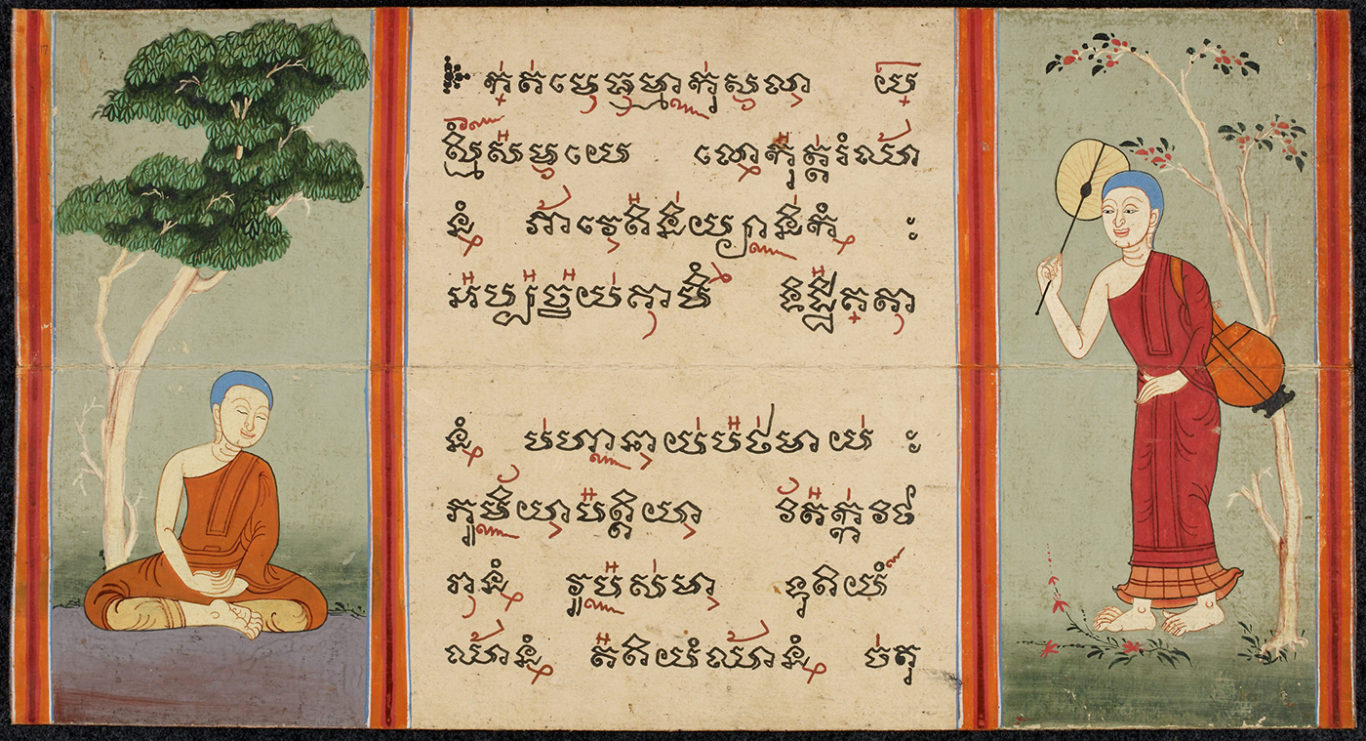What are some important texts in Theravada?

This 19th-century Thai book contains extracts from the Abhidhamma Tipitaka, one of Theravada’s canonical texts, written in Khmer script. | British Library
The bedrock scriptures of nearly all branches of Theravada Buddhism are known collectively as the Pali canon—the collection of teachings believed to be among the earliest surviving written records of what the Buddha taught during his lifetime. (More recently, scholars have identified other texts that appear to be as old as the Pali scriptures.) The Buddha’s sermons were memorized by monks and nuns and transmitted orally for the first four or five hundred years after his death. It wasn’t until after Buddhism arrived in Sri Lanka from India, probably around the 3rd century BCE, that these teachings were written down.
According to tradition, the Buddha taught not in the scholarly Sanskrit of the educated classes of his day but in a common tongue that would be accessible to all seekers. There are no existing records of exactly what that language was. Pali is a sort of lingua franca, an amalgam of several early Indian dialects that many consider to be the scriptural language most closely related to what the Buddha likely spoke. The texts in the Pali canon are salted with mnemonic devices, especially repetition, that made the oral teachings easier to commit to memory.
The Pali canon is also called the Tipitaka (Skt. Tripitaka)—literally “the three baskets”—because it contains three categories of teachings. The Sutta Pitaka, or sutra basket, is a collection of sermons by the Buddha and his principle disciples. The Vinaya Pitaka, literally “the discipline basket,” is the collection of rules for monks and nuns. These first two baskets lay out the path of practice and describe how disciples achieve awakening. The third basket, the Abhidhamma Pitaka, or the “higher dhamma basket,” offers a philosophical analysis and extremely detailed schematic of physical and psychological processes. Altogether, the Pali canon contains thousands of teachings and texts organized into myriad subcategories.
Another important set of texts for Theravada Buddhists are known as the commentaries, which are analyses of the teachings in the Pali canon by scholar-monks attempting to explicate and expand on what is presented in the Tripitaka. The most famous of these commentators was Buddhaghosa, a 5th-century Indian philosopher who worked in Sri Lanka. Buddhagosa collated reams of commentaries, which he translated from Sinhalese into Pali, so that Buddhists in other places could understand them. While to most contemporary Buddhists the commentaries are not as well known as the Pali canon, they have had a profound impact in shaping Buddhist practice across the centuries. Much of what we think of as Theravada practice and doctrine was actually laid out by Buddhaghosa in the Visuddhimagga or Path of Purification, which is principally an Abhidhamma commentary.

Tricycle is more than a magazine
Gain access to the best in sprititual film, our growing collection of e-books, and monthly talks, plus our 25-year archive
Subscribe now